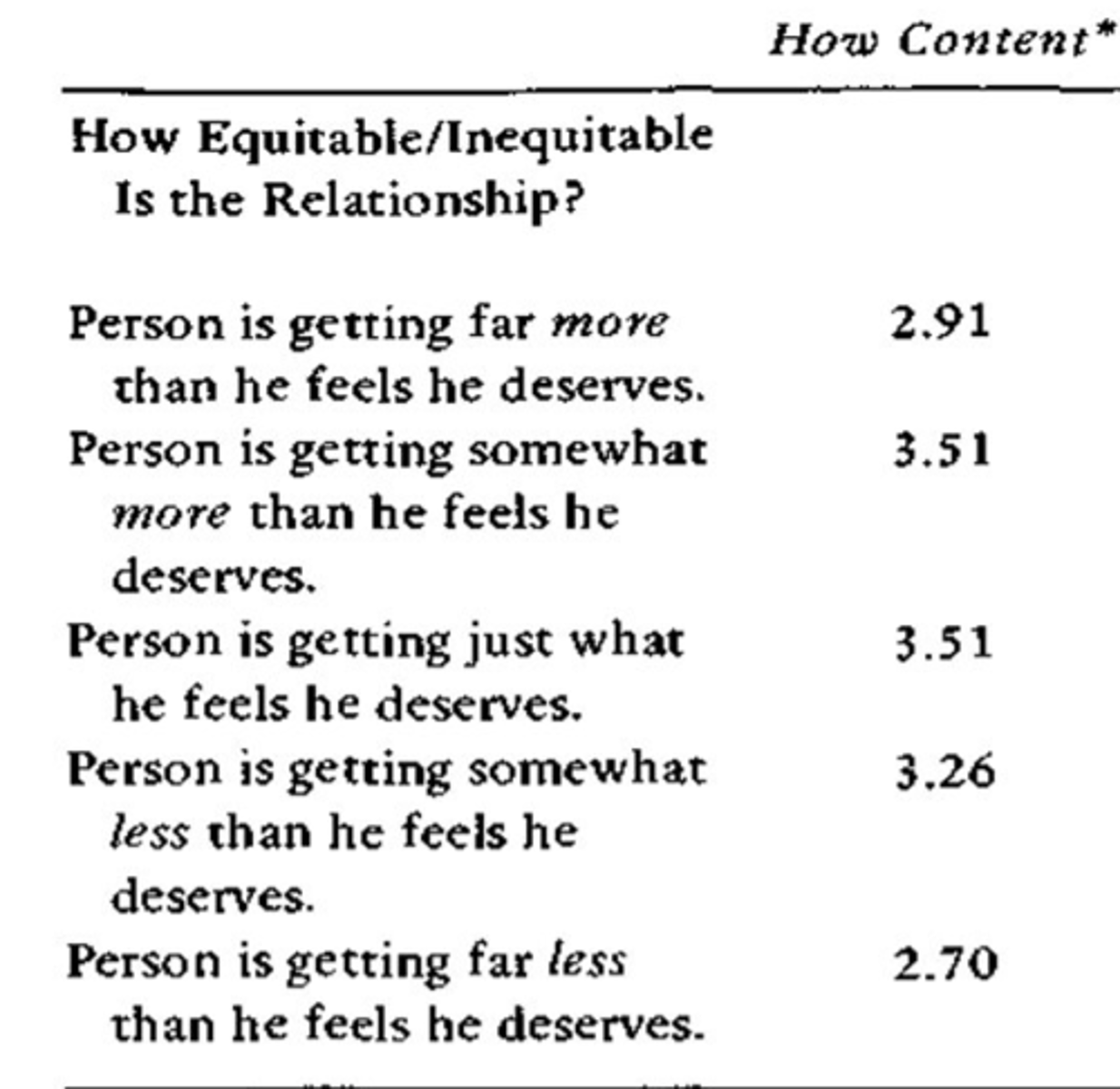RELS 06: Equity Theory
1/4
There's no tags or description
Looks like no tags are added yet.
Name | Mastery | Learn | Test | Matching | Spaced |
|---|
No study sessions yet.
5 Terms
Explain the key elements of equity theory (4)
* Strive for a fair (equitable) relationship
* Equitable = each partner profits from the relationship with the same ratio as their partner
* If you put more in, you deserve more out
* Equity leads to satisfaction, inequity leads to dissatisfaction
Explain how equity theory is similar to / is different from social exchange theory (4)
* ET is a revision of SET
* It accepts that we weigh up
(i)rewards and costs
(ii)comparison levels and CL for alternatives
* However, it also claims that we want an equitable or fair relationship...
* ...not just a beneficial one.
Identify the 6 key findings of Walster's study of equity (6)
•Contentment is highest in fair relationships
* Unfairness against us reduces contentment more than unfairness in our favour
•Over benefitting increases guilt
•Under benefitting increases anger
•Guilt reduces contentment
•Anger reduces contentment

Explain why Walster's study supports equity theory (3)
•All predictions were supported
•So, we are somewhat selfish and not wholly moral
•More affected by unfairness against us
A problem with ET is that the evidence for it is only correlational
Identify another possible explanation of the finding that equitable relationships are more content (2)
* Contentment might lead to equity, or to the perception of equity
* So, contented couples may perceive relationship as fair and discontented couples may notice inequities more